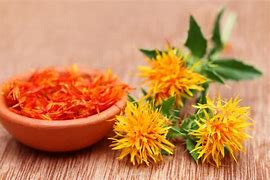Description
Mugwort Leaf (ai ye)
What is mugwort leaf? What is it used for?
Mugwort leaf is known by many other names, including artemisia and Japanese wormwood. It resembles a shrub, which can reach a height of more than three feet, with small greenish-yellow flowers and alternating leaves of green, grayish green or silver. The part of the plant used for medicinal purposes is the leaf. The leaves are gathered in the spring and summer, while the plant is flowering, and dried in a shady place.
According to the principles of traditional Chinese medicine, mugwort leaf has bitter, pungent and warm properties, and is associated with the Liver, Spleen and Kidney meridians. Its main functions are to warm the meridians and stop bleeding, and to dispel cold and stop pain.
Mugwort has a special place in traditional Chinese medicine. It is the herb of choice for acupuncturists who practice moxibustion – a form of healing in which mugwort is burned, either in a cone-shaped pile, or on top of an acupuncture needle.
Mugwort also has a long history of use in folk remedies. Research has shown that it acts as an emmenagogue – that is, an agent that increases blood circulation to the pelvic area and uterus and stimulates menstruation. This could explain its use in treating breech births and menstrual cramps. A landmark study published in 1998 showed that moxibustion using mugwort leaf on expectant mothers could help breech babies relocate to the correct position prior to birth.
How much mugwort leaf should I take?
The amount of mugwort leaf used depends on the condition being treated and the way it is being applied. Mugwort cones may weigh as little as three grams. Larger moxa sticks may weigh up to 10 grams. Mugwort can also be ground up into boiling water and used in a decoction with other substances. Fresh mugwort leaf can be crushed and blended to form a type of juice.
What forms of mugwort leaf are available?
Dried mugwort leaf is usually available as a pre-formed cone or stick for moxibustion. Moxa sticks are widely available from most herbal shops and acupuncture suppliers. Dried, unformed mugwort leaf can also be obtained at many Asian markets and specialty stores.
What can happen if I take too much mugwort leaf? Are there any interactions I should be aware of?
What precautions should I take?
Mugwort leaf should be avoided by patients diagnosed with spleen yang deficiency. Skin contact with mugwort leaf may also cause an allergic reaction in some individuals; burning mugwort leaf should be used with extreme caution by patients and practitioners alike. As always, make sure to consult with a licensed health care provider before taking mugwort leaf or any other herbal remedy or dietary supplement.
References
Cardini F, Weixin H. Moxibustion for correction of breech presentation: a randomized controlled trial. JAMA November 11, 1998;280(18):1580-4.
Fratkin J. Chinese Herbal Patent Formulas: A Practical Guide. Boulder, CO: Shya Publications, 1986.
Naeser M. Outline Guide to Chinese Herbal Patent Medicines in Pill Form, second edition. Boston: Boston Chinese Medicine, 1998, p. 255.















Reviews
There are no reviews yet.